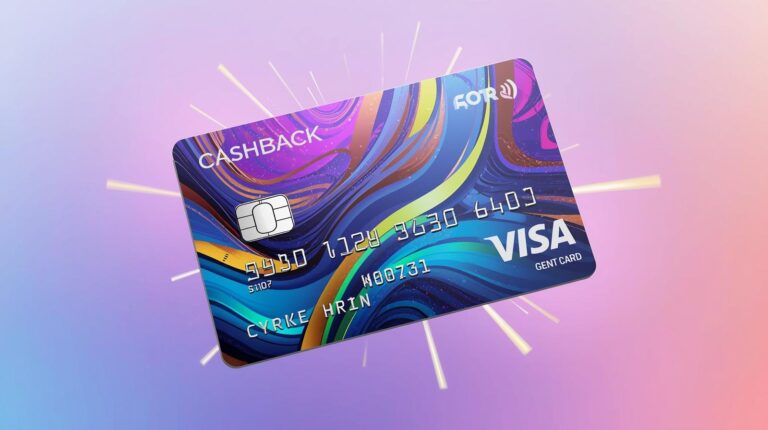When most people think of credit cards, the first thing that comes to mind is spending — not earning. For many, a credit card feels like a double-edged sword: convenient but dangerous if misused.
But here’s the truth: when used smartly, a credit card isn’t just a payment tool — it’s a money-making machine. From cashback rewards to travel perks, from interest-free credit cycles to bonus offers, there are dozens of ways to turn your card into an asset rather than a liability.
In this detailed guide, we’ll cover everything you need to know to use your credit card to your advantage — including the basics, smart tips, and real-life examples that make this strategy practical and profitable.
1. Understanding the Basics of Credit Cards
Before you can start making money with your credit card, it’s important to understand the fundamentals. A credit card is essentially a line of credit offered by a bank or financial institution. You borrow money to pay for purchases and repay it either in full or in part during your billing cycle.
Key terms to know:
- Credit Limit: The maximum amount you can spend using the card.
- Billing Cycle: The monthly period during which your transactions are recorded.
- Interest-Free Period: The window (usually 30–45 days) when you won’t pay interest if you pay your bill in full.
- APR (Annual Percentage Rate): The interest charged on unpaid balances.
Knowing these basics will help you manage your card strategically — and avoid falling into debt traps.
2. Why Credit Cards Can Be a Money-Making Tool
When used wisely, credit cards can help you:
- Save money with cashback on everyday purchases.
- Earn reward points or air miles for travel and shopping.
- Access exclusive deals and discounts.
- Take advantage of interest-free credit periods.
- Build a strong credit score — opening doors to better loans and premium cards.
Instead of seeing your credit card as “debt waiting to happen,” think of it as a financial partner that rewards you for disciplined usage.
3. Types of Credit Cards and Their Earning Potential
To make money with your credit card, you need to pick the right type of card for your lifestyle.
a) Cashback Credit Cards
- Ideal for: Everyday spenders.
- How you earn: A fixed percentage of your spending (1–5%) is returned as cashback.
- Example: Spend ₹20,000 a month at 2% cashback = ₹400 monthly or ₹4,800 annually.
b) Rewards Credit Cards
- Ideal for: People who prefer redeeming points for shopping, fuel, or vouchers.
- How you earn: Earn points for every rupee/dollar spent. Points can be converted into cash, travel bookings, or gift cards.
c) Travel Credit Cards
- Ideal for: Frequent travelers.
- How you earn: Collect air miles or travel points with every purchase, plus perks like airport lounge access, free hotel stays, and flight discounts.
d) Co-Branded Cards
- Ideal for: Shoppers loyal to a specific brand or store.
- How you earn: Extra discounts or rewards for purchases at partner stores or platforms like Amazon, Flipkart, or airlines.
e) Premium Lifestyle Cards
- Ideal for: High-income individuals.
- How you earn: High-value reward points, exclusive offers, free golf sessions, concierge services, and luxury benefits.
Pro Tip: Choose a card that aligns with your actual spending habits. For example, don’t get a travel card if you hardly travel — opt for a cashback card instead.
4. Smart Strategies to Make Money with Your Credit Card
Here’s where the real magic happens. By combining discipline with strategy, you can convert your credit card into a source of profit instead of debt.
a) Maximize Cashback and Rewards
Every swipe should give you something back. Use your credit card for:
- Groceries and supermarket shopping
- Fuel
- Utility bills (electricity, internet, water)
- Online shopping
- Subscriptions (Netflix, Spotify, etc.)
Example:
If you spend ₹50,000 a month with a 2% cashback card, that’s ₹1,000 earned monthly or ₹12,000 annually — just for using your card smartly.
b) Leverage Sign-Up and Joining Bonuses
Most banks offer welcome rewards when you open a new card and spend a minimum amount within the first few months.
- Example: A travel card offering 10,000 bonus miles if you spend ₹1,00,000 in the first 90 days.
These bonuses can be redeemed for free flights, vouchers, or cashback.
c) Time Your Purchases
Understanding your billing cycle can give you up to 45 days of interest-free credit.
- Example: If your billing cycle ends on the 5th, make big purchases on the 6th. This maximizes your interest-free window.
Meanwhile, park your cash in a high-interest savings account or short-term investment to earn extra interest until the due date.
d) Take Advantage of Bank Offers
Banks often partner with e-commerce platforms, restaurants, or retailers for:
- Cashback deals during sales
- No-cost EMIs on electronics or appliances
- Extra reward points on certain categories
Always check your bank’s app or website for ongoing offers before making purchases.
e) Earn Through Referral Programs
Many credit cards allow you to refer friends or family and earn rewards when they’re approved.
- Example: ₹500 cashback or 2,000 reward points per referral.
f) Use Reward Points Wisely
Don’t let your points expire. Redeem them for:
- Cash credits
- Flight or hotel bookings
- Shopping vouchers
- Fuel at partner outlets
Pro Tip: Compare the value of different redemption options — travel redemptions often give the highest value per point.
g) Use EMI Conversions for Smart Purchases
If you need to buy something expensive, convert it into a 0% or low-interest EMI using your credit card.
This keeps your cash flow healthy and avoids dipping into savings.
h) Build and Maintain a Strong Credit Score
A strong credit score doesn’t give you direct cash, but it saves money in the long run:
- Lower interest rates on home loans, car loans, or personal loans.
- Eligibility for high-reward or premium credit cards with better perks.
Pay bills on time, keep your credit utilization below 30%, and avoid multiple applications at once.
5. Common Mistakes to Avoid
Making money with credit cards requires discipline. Avoid these pitfalls:
- Carrying Balances: Paying only the minimum amount leads to high-interest charges.
- Overspending: Rewards are useless if you’re spending more than you can repay.
- Ignoring Fees: Late payment charges and annual fees can wipe out your benefits.
- Not Tracking Rewards: Points expire — keep track of them.
- Using the Wrong Card: Using a travel card for grocery shopping minimizes benefits.
6. Advanced Tips for Maximizing Earnings
If you’ve mastered the basics, try these advanced strategies:
a) Use Multiple Cards Strategically
Have one card for cashback on groceries and bills, another for travel perks, and maybe a premium card for high-value purchases.
b) Stack Offers
Use your credit card on top of store discounts and digital wallet offers to triple your savings.
- Example: Shop during Amazon’s sale → Apply bank offer → Use cashback credit card = triple benefits.
c) Use Credit Card Portals
Banks often have exclusive reward portals for higher point values. Booking through these portals for travel or shopping often gives bonus rewards.
d) Automate Your Bill Payments
Link your card to autopay systems for bills like utilities, subscriptions, and mobile plans. Many cards give bonus points for automated payments.
7. Real-Life Example
Meet Ravi, a salaried professional who spends ₹60,000 monthly on groceries, bills, dining, and travel. Here’s how he earns:
| Strategy | Benefit |
|---|---|
| Cashback on groceries and fuel | ₹1,500/month |
| Rewards on dining and travel | ₹1,200/month |
| Timing purchases | Extra ₹800/year |
| Sign-up bonus | ₹5,000 once |
| Referral bonuses | ₹2,000/year |
| Total Annual Earnings | ₹30,000+ |
Ravi doesn’t spend extra — he just uses his credit cards strategically.
8. Safety Tips While Using Credit Cards
Smart usage also means safe usage:
- Never share your PIN or OTP.
- Use secure websites for online shopping.
- Enable SMS alerts for every transaction.
- Regularly review statements for fraudulent charges.
9. Should You Get a Credit Card Just to Earn Money?
No. The primary purpose of a credit card is convenience and financial flexibility, not income generation. Treat the money-making aspect as a bonus for disciplined usage, not a primary reason to get a card.
10. Best Credit Cards for Money-Making (India & U.S.)
To maximize your earnings, you need the right card for your region and spending habits. Here are some top picks for India and the U.S.:
For Readers in India
1. HDFC Millennia Credit Card
- Best for: Online shoppers
- Rewards: 5% cashback on Amazon, Flipkart, and Myntra; 1% elsewhere.
- Annual Fee: ₹1,000 (waived if annual spends exceed ₹1 lakh).
2. SBI SimplyCLICK Credit Card
- Best for: E-commerce and online services
- Rewards: 10x reward points on Amazon, BookMyShow, and more.
- Annual Fee: ₹499 (waived with spends over ₹1 lakh annually).
3. Axis Bank Ace Credit Card
- Best for: Utility bills and regular spending
- Rewards: 5% cashback on Google Pay bill payments, 4% on dining and food delivery.
- Annual Fee: ₹499.
4. American Express Membership Rewards Credit Card
- Best for: Reward maximizers
- Rewards: High-value points that can be converted into travel, shopping, or cashback options.
- Annual Fee: ₹4,500 (often waived with milestone spends).
5. HDFC Diners Club Privilege Credit Card
- Best for: Frequent travelers
- Rewards: 5x points on travel bookings, complimentary lounge access, and exclusive hotel discounts.
For Readers in the U.S.
1. Chase Sapphire Preferred® Card
- Best for: Travel and dining
- Rewards: 2x points on travel and dining, 25% extra value when redeemed through Chase Ultimate Rewards.
- Annual Fee: $95.
2. Citi® Double Cash Card
- Best for: Cashback lovers
- Rewards: 1% cashback when you buy, another 1% when you pay your bill — effectively 2% cashback on everything.
- Annual Fee: $0.
3. Capital One Venture Rewards Credit Card
- Best for: Frequent travelers
- Rewards: 2 miles per $1 spent, plus a large sign-up bonus for new users.
- Annual Fee: $95.
4. Discover it® Cash Back
- Best for: Rotating categories
- Rewards: 5% cashback on categories that change quarterly (like Amazon, groceries, gas), plus unlimited 1% on everything else.
- Annual Fee: $0.
5. The Platinum Card® from American Express
- Best for: Premium travelers
- Rewards: 5x points on flights, luxury travel perks, and worldwide lounge access.
- Annual Fee: $695.
Pro Tip: Always review the annual fees and reward structure carefully. Choose cards that match your actual spending — that’s the key to maximizing your returns without paying unnecessary costs.
11. Localized Tips for Maximizing Earnings
For Indian Cardholders
- Use your card during festive season sales like Diwali or Independence Day when banks offer higher cashback.
- Combine your credit card with apps like Cred to pay bills and earn additional rewards.
- Take advantage of fuel surcharge waivers offered by most cards.
For U.S. Cardholders
- Use credit card shopping portals like Chase Ultimate Rewards or Amex Offers for bonus points.
- Stack deals with platforms like Rakuten for extra cashback on online purchases.
- Always check for 0% APR promotional offers if planning big purchases, but pay off before interest applies.
12. Final Words
A credit card can either drain your wallet or fill it — the choice is yours. With strategic planning, disciplined spending, and timely repayments, you can transform your credit card into a profitable financial tool.
Here’s the golden rule:
Spend what you can pay off in full — and always pay on time.
Whether you’re in India, the U.S., or anywhere else in the world, the principle is the same:
Use your credit card like a financial tool, not free money.
Choose the right card for your lifestyle, spend responsibly, pay your bills in full, and take advantage of the reward programs, cashback offers, and travel perks. Done right, you won’t just avoid debt — you’ll earn while you spend.





